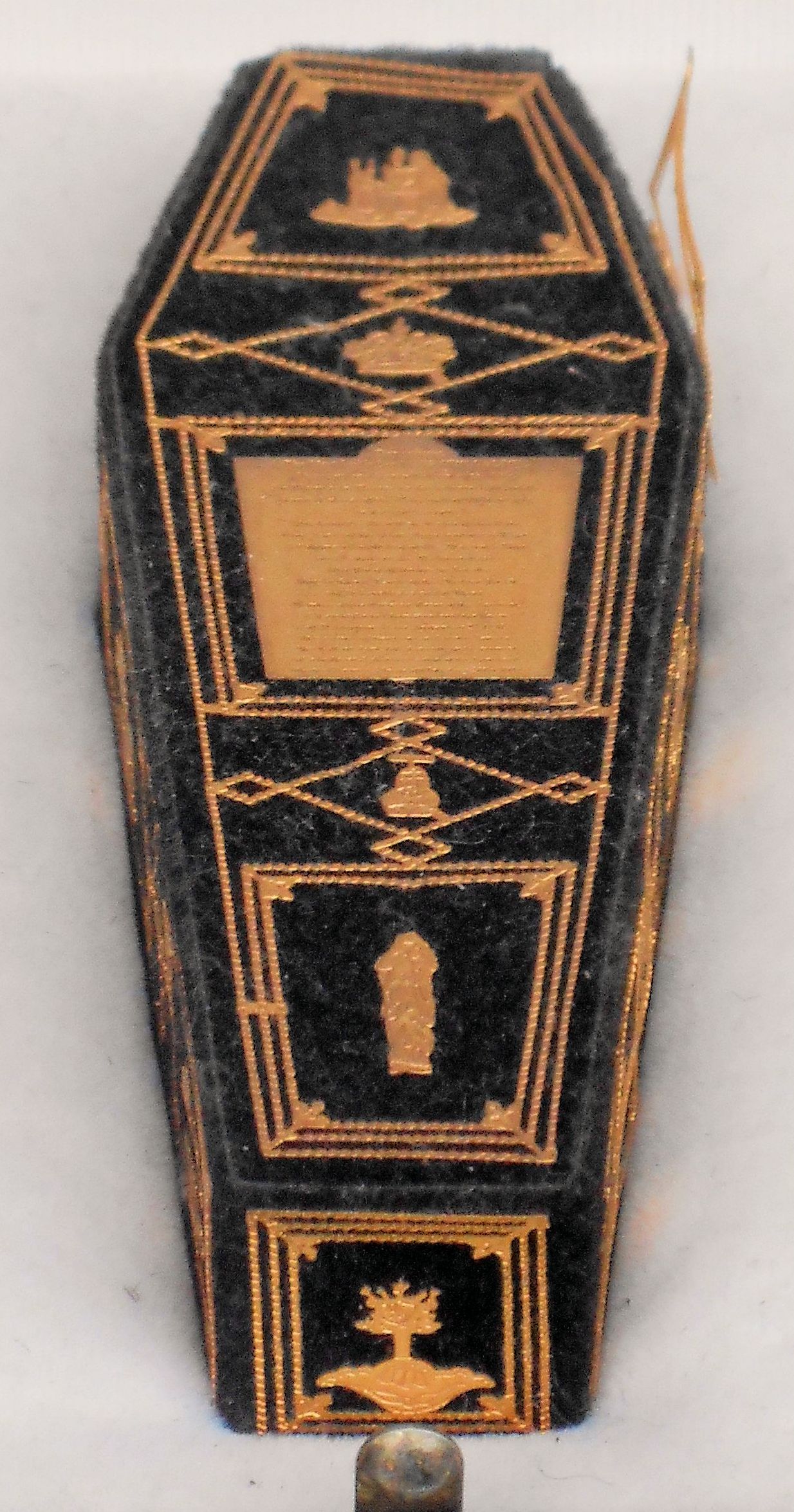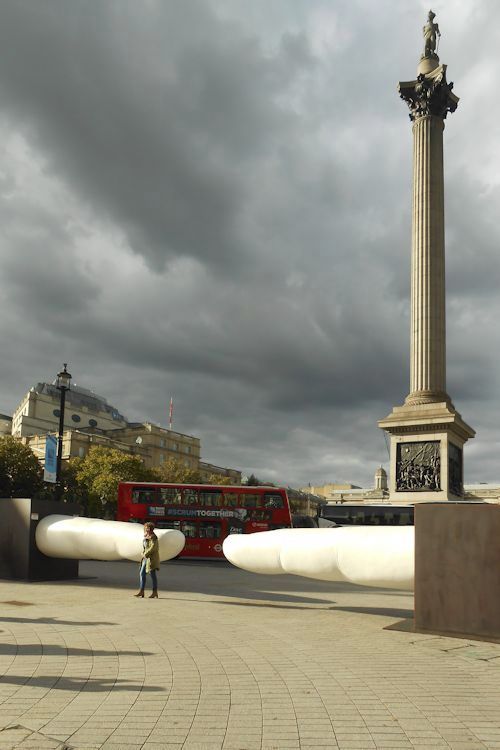Following Nelsonís Footsteps Part 4
The Final Battle
Before the Battle of Trafalgar, Nelson sent his famous signal to the Fleet; "England expects that every man will do his duty." When the French fleet escaped from Toulon in May 1805, Napoleonís plan to invade Britain seemed to be working even better than he had expected. Nelson, who had been blockading Toulon for two years, at first thought the French might be heading for Egypt. The French plan was to make Nelson think they were going to attack the West Indian islands but instead return to Europe. Nelson guessed what was going on and tracked him down as the French sailed south to Cadiz. On the 21 October 1805 Nelson entered into battle with the French fleet at Trafalgar. It was at the height of this battle that Nelson was shot as he paced the deck of his ship ďVictoryĒ. He was easily recognisable by the marksmen on the French ships, as he walked about on deck wearing his full dress uniform, displaying all his medals, he seemed impervious to the danger he was in.
He died shortly after being hit by a single bullet to the top left of his body. Sailors killed in battle were normally buried at sea but due to his rank and the high esteem in which he was held, it was felt proper that Nelsonís body should be brought back to England. It was initially preserved in a Ďleaguerí (a large casket) filled with brandy, camphor and myrrh, (which acted as a preservative during the long journey home) lashed to the mast of the Victory as it sailed back to Gibraltar where the ship underwent repairs. From there the ship continued to Portsmouth, before making the voyage along the Thames Estuary to Greenwich.
Following the news of Nelsonís death, Lady Hamilton moved to 11 Clarges Street, where she mourned and received visitors. Shortly afterwards she travelled to the Thames Estuary to watch Lord Nelsonís body arrive on its way to Greenwich. She lodged at The Royal Terrace (built in 1793 which takes its name after Princess Caroline arrived in Southend in 1803 and remained there for 3 months, in what was then called the Grand Terrace).
Nelsonís State Funeral
Following the Battle of the Nile Nelson had been presented with the mainmast of the French flagship LíOrient, which he had stored at his chosen undertakers, Messrs A. France & Son, at their branch at 45 Lambs Conduit Street. France & Son are so proud of their association with the event that in their window to this day are still displayed a model of Nelsonís Flag Ship H.M.S Victory and a miniature of his coffin. When it was decided that Nelson would be laid to rest at St Paulís its Surveyor, the engineer Robert Mylne, swung into action with plans for the funeral service and burial.
On its arrival at Greenwich the lead coffin was placed inside a much grander outer coffin made from mahogany and decorated with ten thousand gilt nail-heads forming pictures of Nelsonís achievements, specially constructed in London. For three days, from 5th to 7th January 1806, it lay in state in the Painted Hall of the Royal Hospital at Greenwich, surrounded by captured French and Spanish flags, and with the hallís walls shrouded in black drapes. Thirty thousand people filed past.
On 8th January the coffin was taken in a ĎGrand River Processioní up the Thames to Whitehall, accompanied by naval dignitaries and a large flotilla of gilded Livery Company barges. It was carried on the royal barge originally built for Charles II, with the gilding covered in black velvet and the canopy decorated with black ostrich feathers. (The barge is today preserved at the Royal Naval Museum at Portsmouth). Cannons were fired from along the way as the funeral barge passed and ordinary people crowded onto the bridges and riverbanks for a view of the passing spectacle. The disembarkation took place at Whitehall Stairs, between Charing Cross and Westminster, and then on to the Admiralty building where the coffin lay overnight.
Nelson's funeral in London on the following day was a tremendous occasion, the streets lined with weeping people. To capture this kind of emotion you would need to look again at our own reactions with the funeral of Princess Diana. The funeral procession led by the Duke of York was so long the procession reached the doors of St. Paul's Cathedral before the mourners at the rear had left the Admiralty. This was the first time a commoner had been given a state funeral. There was, however, some controversy and diplomatic manoeuvring regarding the attendance of the Prince of Wales. King George was precluded from attending by the long-standing convention that monarchs do not take part in the funerals of commoners. The Prince had, therefore, requested to lead the funeral but during his lifetime Nelson had a rather low opinion of him. Additionally, the procession was passing through the City of London where the Lord Mayor has precedence over all bar the sovereign.

Arriving at St Paulís the coffin was carried into the cathedral by twelve seamen from HMS Victory. It was placed under the great dome where large stands had been erected for the multitude of attendees admitted by ticket: perhaps as many as seven thousand. The Archbishop of Canterbury had decided that Nelson should be buried above ground in the crypt immediately below the dome. No doubt due to the large size of the triple-coffin it was impractical to walk it down the stairs so a hole was cut in the cathedralís floor through which it could be lowered at the end of the lengthy service. In the crypt, the coffin was to be encased in a sarcophagus, made of granite slabs. The tomb as it stood immediately following the funeral was not as it now remains today, however. The governmentís Surveyor General, James Wyatt, produced some designs for further embellishment, none of which found favour. Two hundred and fifty years earlier Cardinal Wolsey had commissioned the Florentine Renaissance sculptor Benedetto Rovezzano to create a sarcophagus, to eventually be used for his own tomb. When Wolsey fell foul of Henry VIII the work was expropriated and kept at Windsor Castle but failed to find a purpose. About ten years after Nelsonís funeral a black and white marble plinth was added to his simple granite tomb, on top of which was added Wolseyís sarcophagus surmounted by a marble cushion holding a viscountís coronet.
Nelsonís Column

You would think that after this great show of emotions, a monument in London to a national hero would soon be erected, but how wrong could you be? It took a staggering 62 years before Trafalgar Square was finally completed. Just a year after Nelsonís death a monument was erected in County Cork, Ireland and the following year Nelsonís column was erected in Dublin.
Over thirty years after his death the Nelson Memorial Committee was formed, chaired by Admiral Sir George Cockburn and Sir Thomas Hardy (Kiss me Hardy) with the aim of erecting a statue or monument to Nelson somewhere in London. The Royal Mews at Charing Cross was considered a suitable place for such a monument to be constructed.
The winning design for the Nelson memorial was that of William Railton. The completed column may seem tall but Railtonís original design stood over thirty feet higher and was reduced in subsequent revisions. A steam-powered crane was used for lifting the pieces. The work was undertaken by the firm Messers Grissell & Peto, who was simultaneously employed on the new Houses of Parliament. The stone statue of Nelson which was to top the great column was sculpted by the competitionís runner-up, Edward Hodges Baily. Such was the great weight of the statue that it took two days to raise: one day for the lower half and another for the upper part. The main column and statue were finally in place in November 1843.
The four huge bronze lions on granite plinths that guard the column at its base proved to be problematic. The budget was set at three thousand pounds but after six years of wrangling, the sculptor withdrew because he believed they could not be made for that price. A second artist delivered lions of stone but they were rejected and now reside near Bradford. Sir Edwin Landseer, a famous painter of animals had never done any sculptures before; he was chosen for some unknown reason. He sculptured the lions from a corpse of a lion delivered to his home from the London Zoo. It is said that when the dead lion arrived from the Zoo, he exclaimed: ďMy dinner has just arrived!Ē
The last of bronze reliefs on the pedestal of the column was not installed until May 1854, and the four lions, although part of the original design was only added in 1867, a reminder to the World of our greatest heroís achievements.
Thanks also to Lock & Co for their helpful references of Nelsonís visits to their shop in St Jamesís and details of his accounts
London Time

Follow Us
The contents of this website are the property of knowledgeoflondon.com and therefore must not be reproduced without permission. Every effort is made to ensure the details contained on this website are correct, however, we cannot accept responsibility for errors and omissions.
© Copyright 2004 -
Contact Us | Advertise